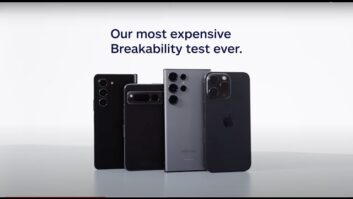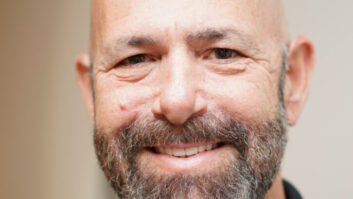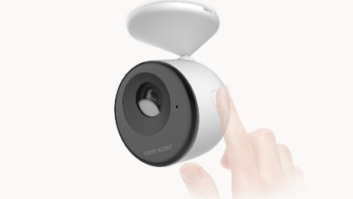Nearing an approval decision from the Federal Communications Commission, Rupert Murdoch’s proposed takeover of Hughes’ Electronics and its DirecTV unit have already had a measurable impact on the multichannel television industry.
The signs of that looming threat were everywhere this month’s Western Cable Show in Anaheim, Calif., where a panelist at session entitled “Deconstructing Rupert” made the astute observation that “no one is going to deconstruct Rupert Murdoch,” and the established cable and satellite industries are nervous.
As this went to press, the proposed takeover of Hughes by Murdoch’s powerful News Corp. was nearing an expected FCC approval. Meanwhile, cable Multiple System Operators (MSOs) scrambled to complete deals with major CE dealers to bring the business of selling cable TV equipment services to retail.
Among some of the more notable partnerships are Cox’s dealers with retailers in Arizona and Comcast’s planned foray into 3,000-4,000 nationwide CE stores by year-end 2004.
For Cox in Tucson, Ariz., college students are helping floor salespeople engage consumers, asking them to better understand and purchase cable-related products and services, such as HDTV channels, Digital Video Recorders (DVRs), modems and digital services.
For the entire cable industry, HDTV at retail will be a huge motivator, and savvy CE stores need to prepare themselves for the new cable side of the HDTV story, which will soon be added to the pre-existing presence of satellite’s three players, EchoStar, DirecTV and VOOM.
Because HDTV consumers skew toward those with a higher discretionary income, this marketing base will be extremely important to the bottom lines of every player involved.
Reports suggest that presently Comcast is operating with about 1,000 CE outlets nationwide, including those from Tweeter, RadioShack, Staples and Circuit City.
Meanwhile, both EchoStar CEO Charlie Ergen and his likely new rival, Murdoch, have made overtures to the industry, government, Wall Street and to one another, suggesting possible cooperation.
This could take the form of working together to combat piracy and other joint enterprises that will not evoke the government’s antitrust ire, however, the more likely early common ground will be that of bandwidth- and spectrum-sharing.
If both could bind to revive and implement the “Switzerland” proposal to use one satellite to deliver one set of Local-Into-Local (LIL) signals into both EchoStar and DirecTV dishes across the land, the gains in bandwidth (and the resulting openings for other content) could be huge.
More programming would mean satellite could compete more effectively against wired and wireless competitors. For example, more efficient use of bandwidth means a better plan to deliver all 210 Designated Market Areas (DMAs) to users in those locales, which means more competition to cable and other video suppliers.
For EchoStar, CE retail means a total of about 20,000 nationwide locales selling HDTVs and better dishes, highlighted by arrangements with Sears, RadioShack, Gateway, Wal-Mart and CompUSA outlets. Products being sold include the EchoStar Super Dish antenna, the EchoStar HDTV monitor, the model 921 HDTV DVR receiver, and the model 811 HDTV receiver (which includes a built-in off-air tuner and an enhanced HDTV adapter, that will allow for additional HD channels).
Because they supply a lot of advertising, retailers are especially important to EchoStar.
For Cablevision’s VOOM the first quarter of 2004 will be key indicator, after early numbers reveal how VOOM did over the pivotal holiday season. VOOM currently is being sold exclusively in the 1,600 or so Sears stores nationwide.
Going forward, it is likely that VOOM will expand its CE distribution footprint — just like DirecTV and EchoStar have done. Looking forward to CES 2004 in Las Vegas, a new VOOM HDTV-DVR combo is expected, along with a new “whole house” solution, the latter of which is essentially the first of a new generation of a home network TV-server-type devises.
For DirecTV, presently it, too, is featured in scores of thousands of nationwide CE stores, including Circuit City, Radio Shack and Blockbuster.
Once Murdoch arrives in the U.S., most are expecting him to match what he has done in the U.K., with his BSkyB satellite service. There, with the financial and strategic help of a bank, a CE manufacturer and large telco, BSkyB deployed millions of new digital set-tops within an amazingly short timeframe. A new “free” set-top box involving a standardized DVR, delivered to more than 12 million U.S. DirecTV users, would do much to boost CE sales and ramp up the competition between DirecTV and its satellite and cable competitors.
In Britain, Murdoch is also known to have pulled away from a retail distribution model and moved more toward a direct distribution model. To undertake that in the U.S. would have marked repercussions, and is not expected to be considered for some time following News Corp.’s expected takeover of DirecTV in early 2004.
In 2004-2005, CE can expect to market many new forms and iterations of HDTV, DVRs, Interactive TV (iTV), broadband and Internet. Plus, for the cable and telephony sides of the business, CE alliances are anticipated that would sell voice services at CE retail, as well.













